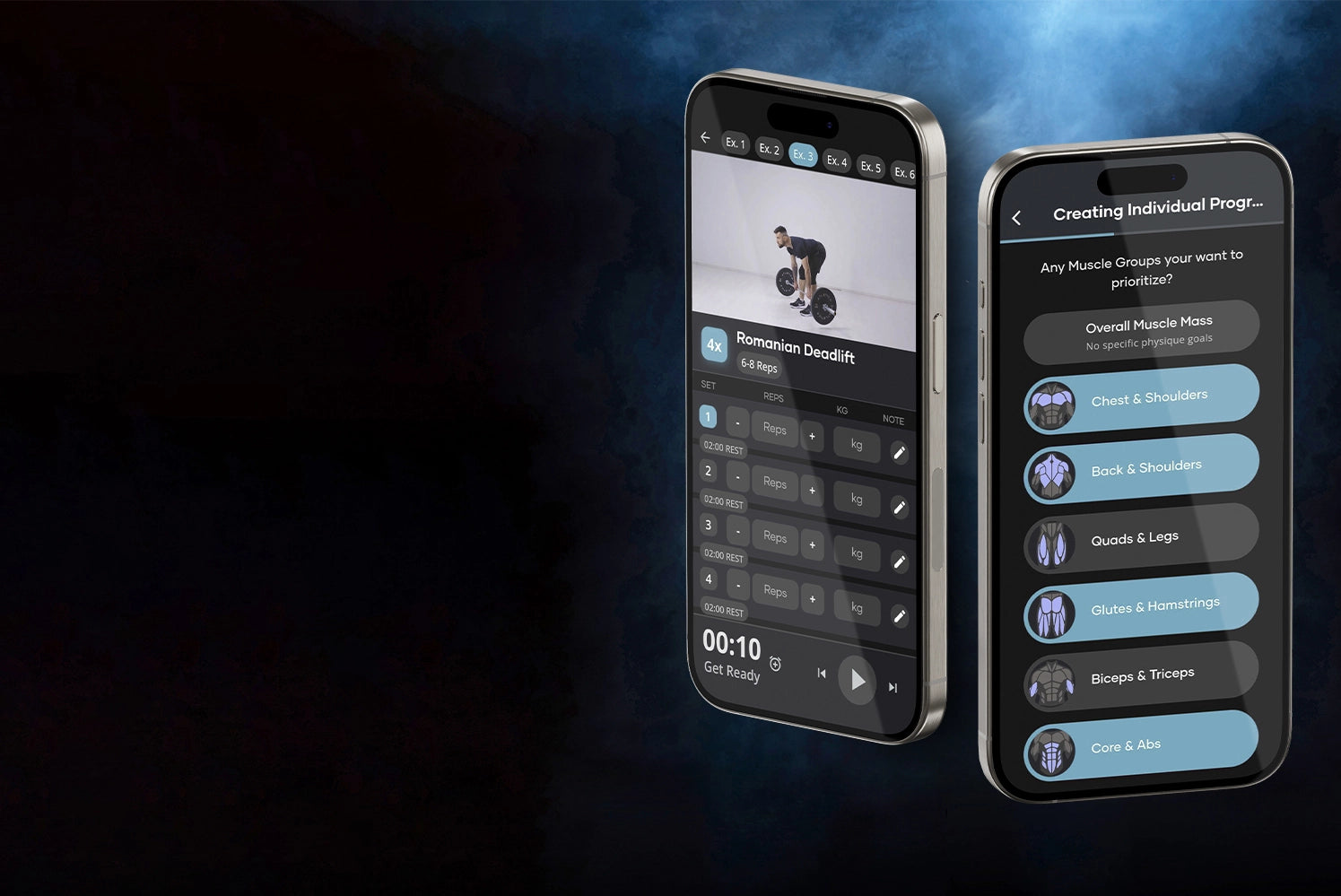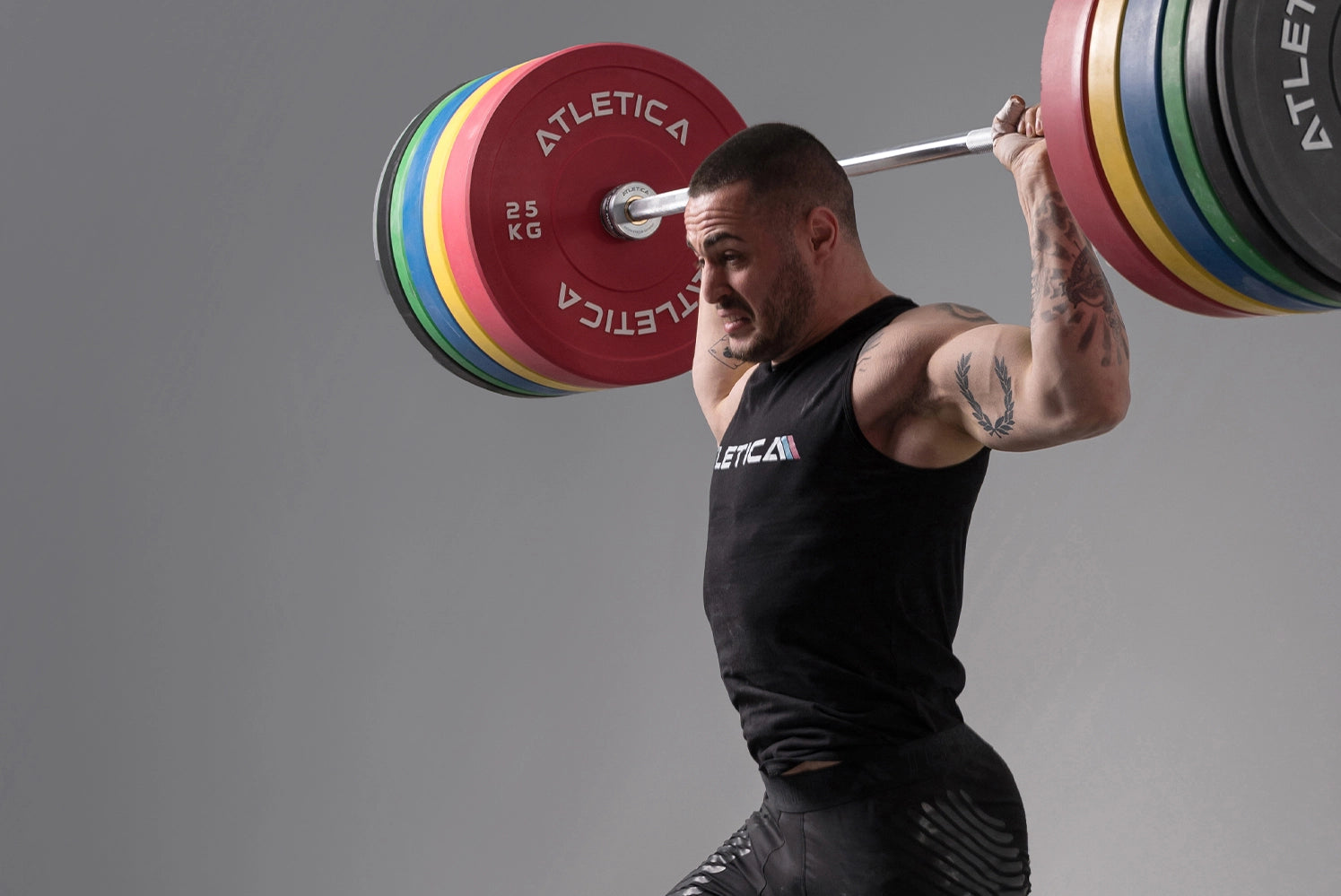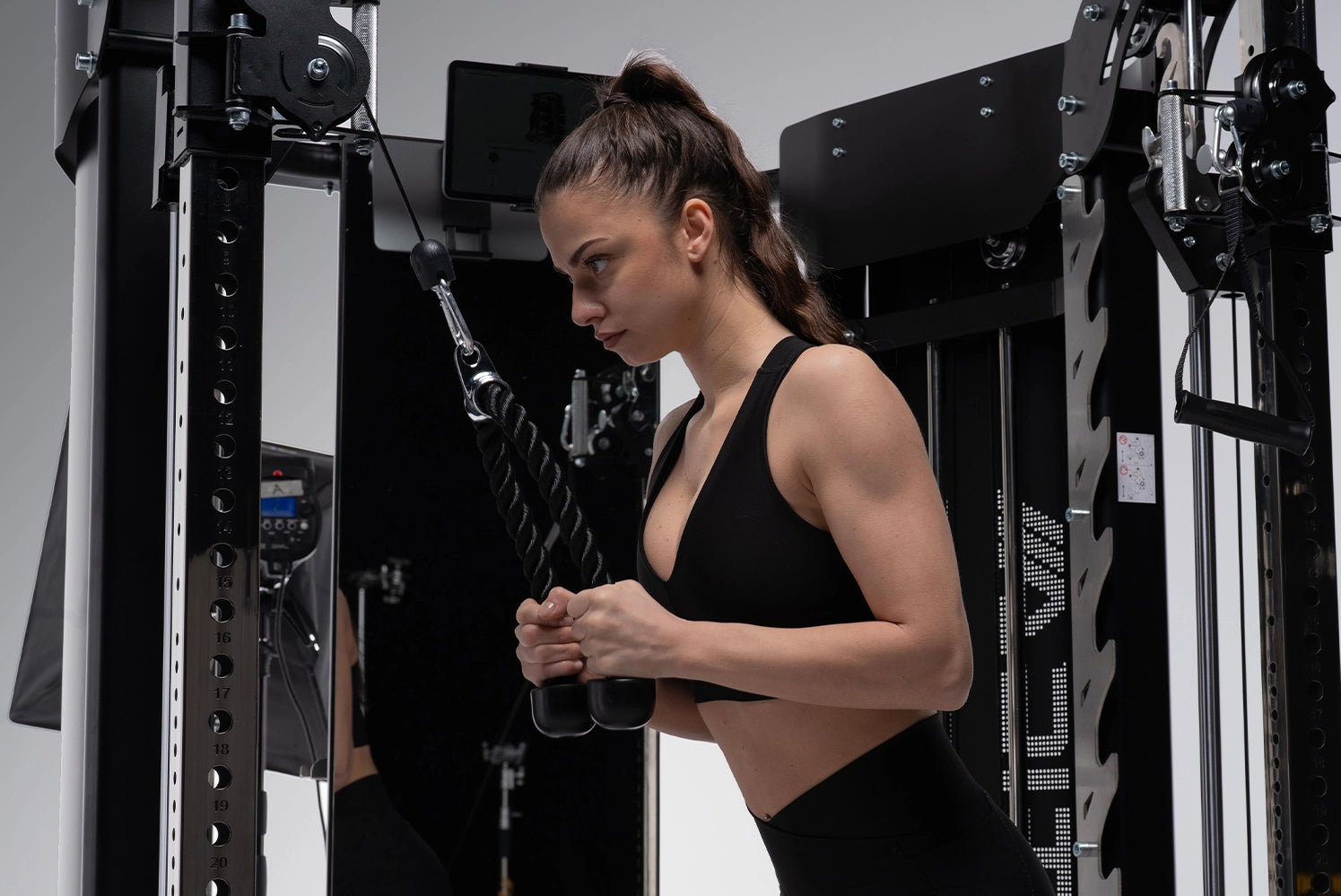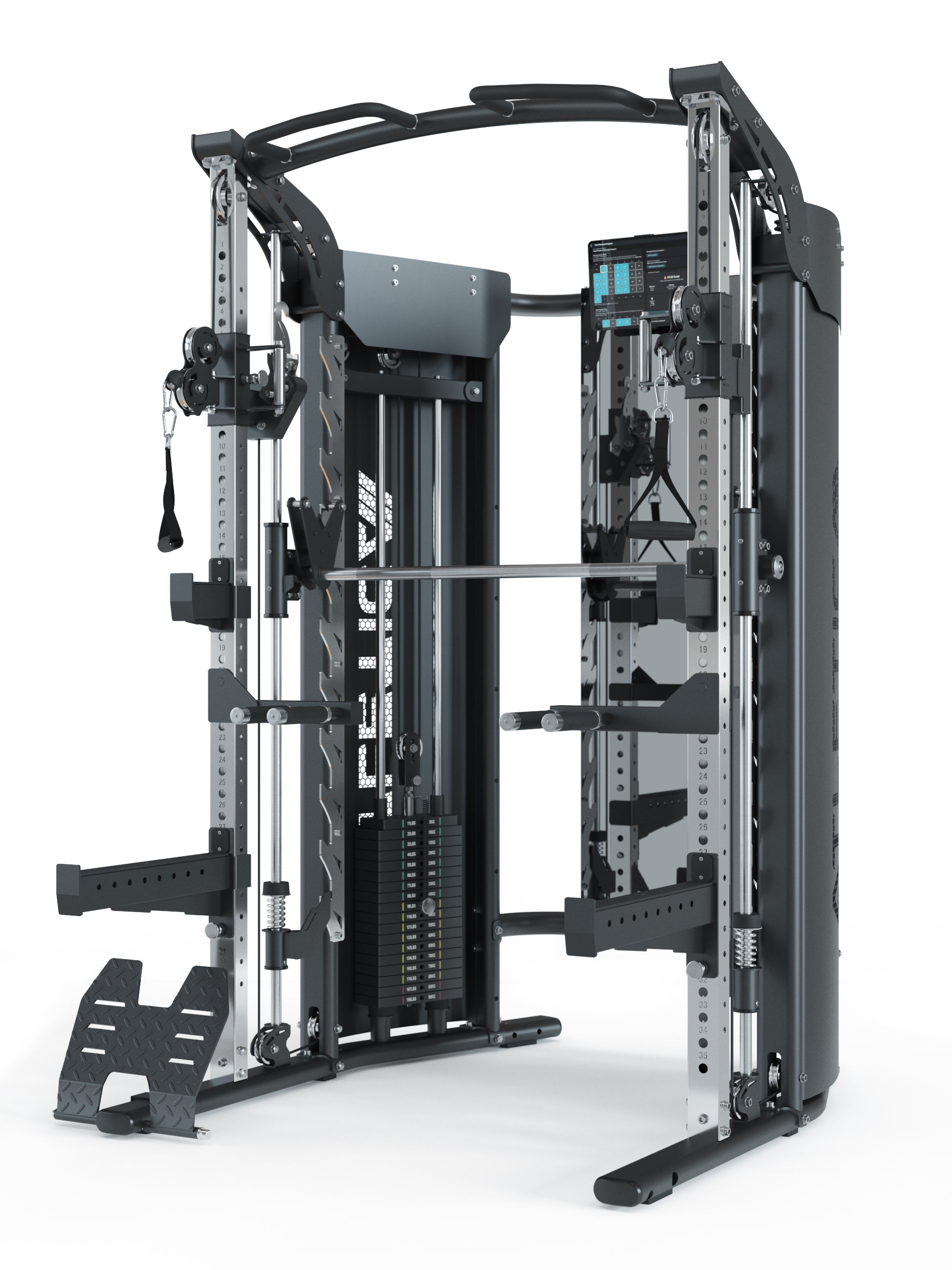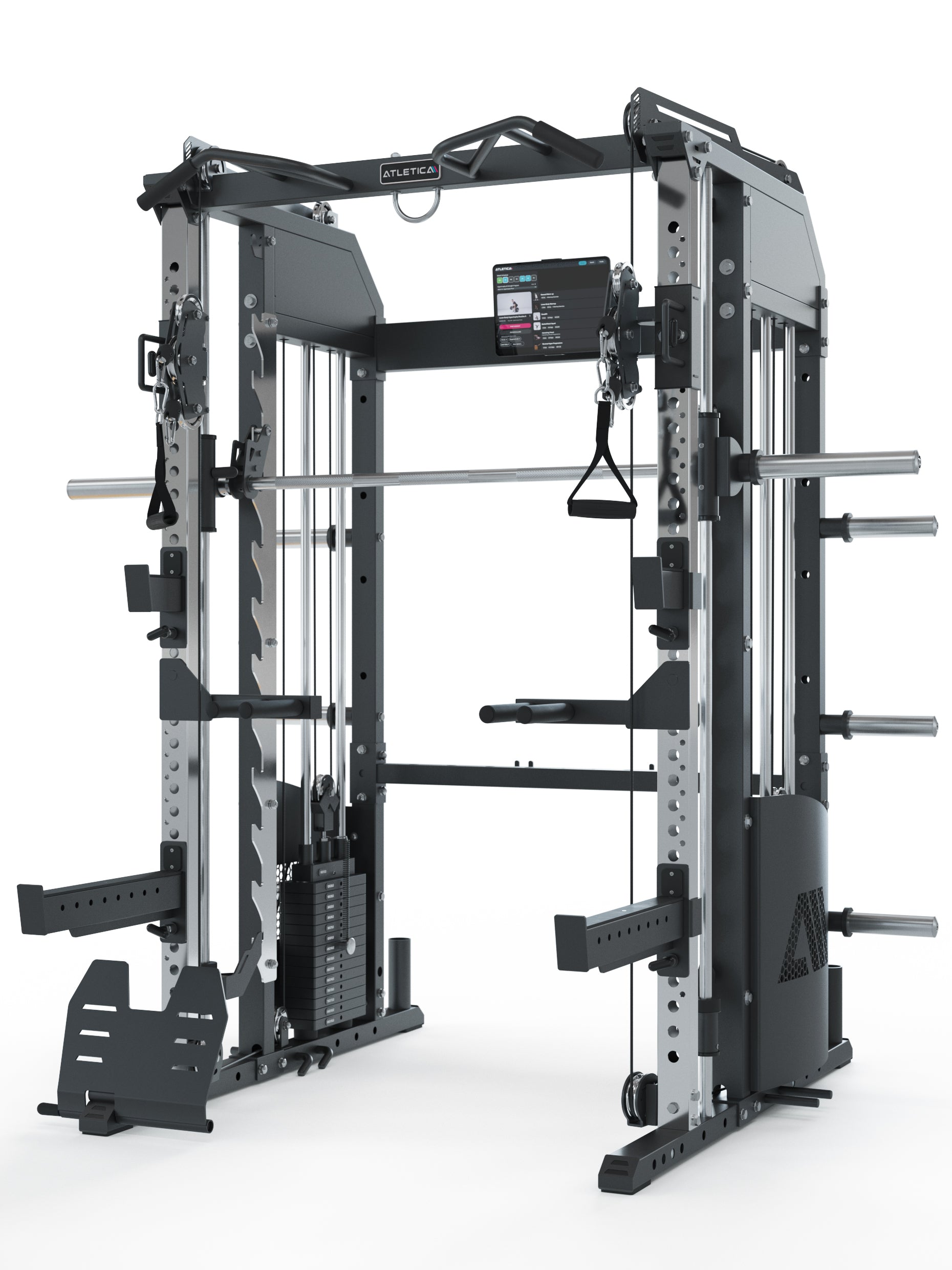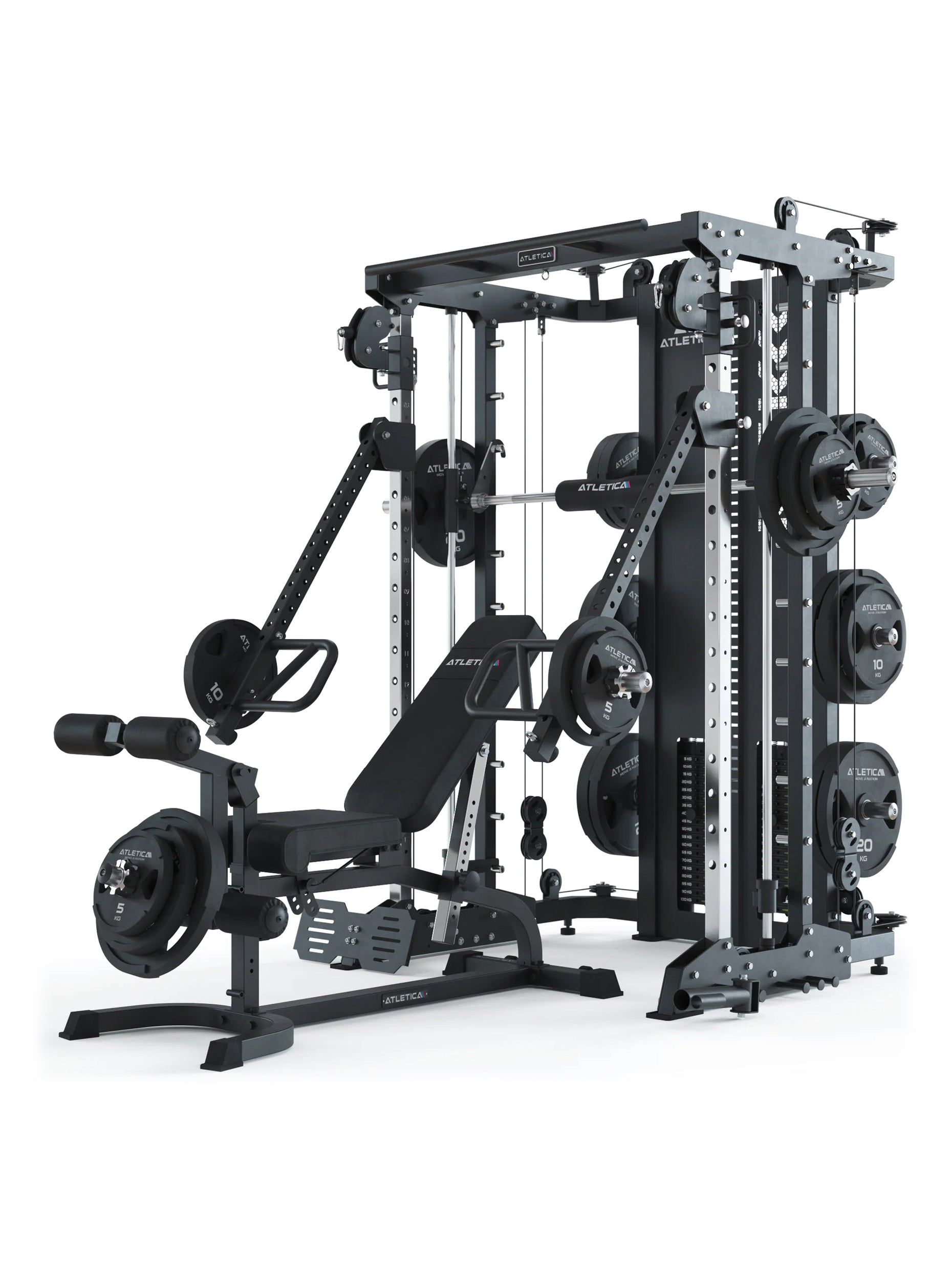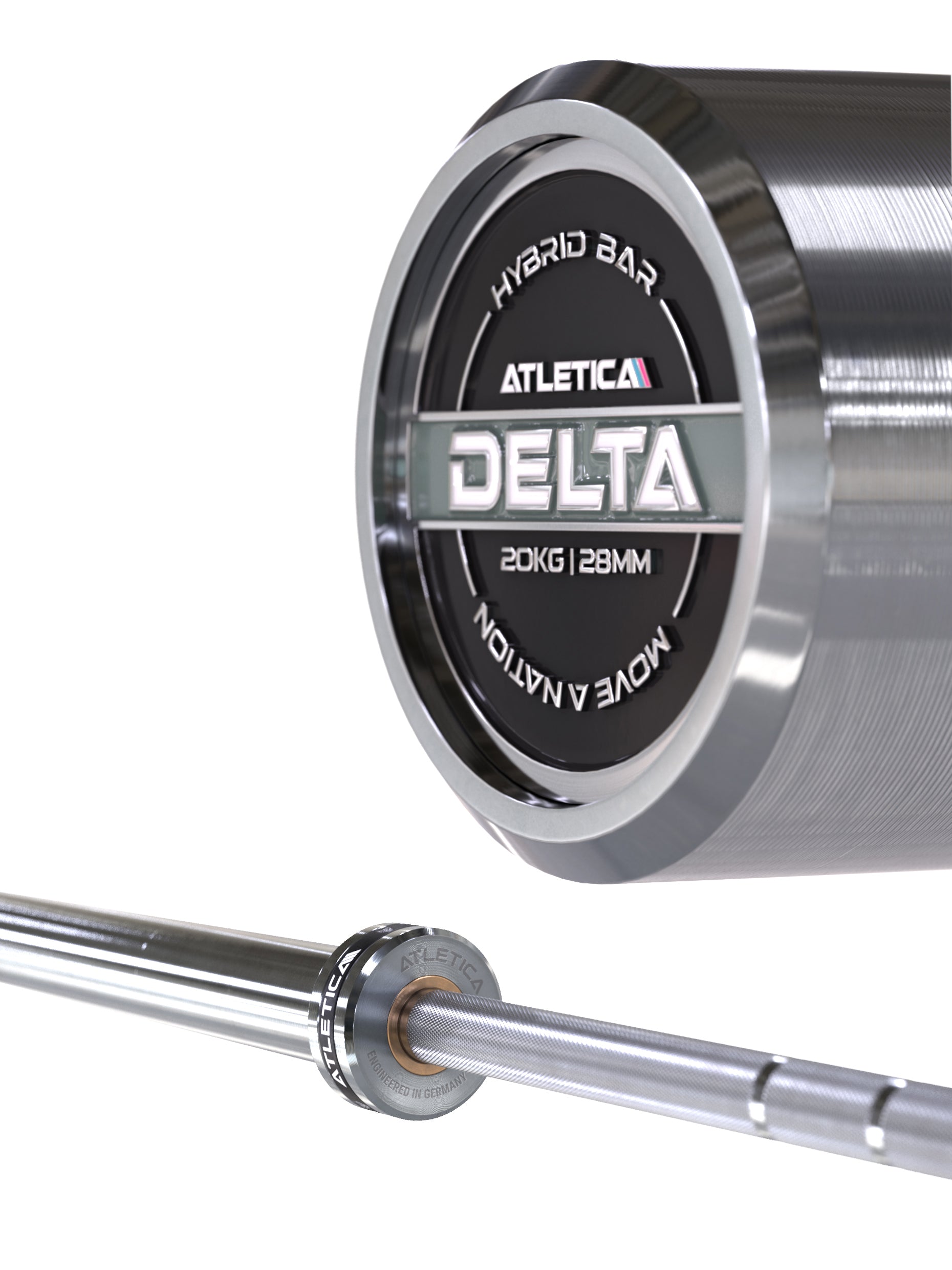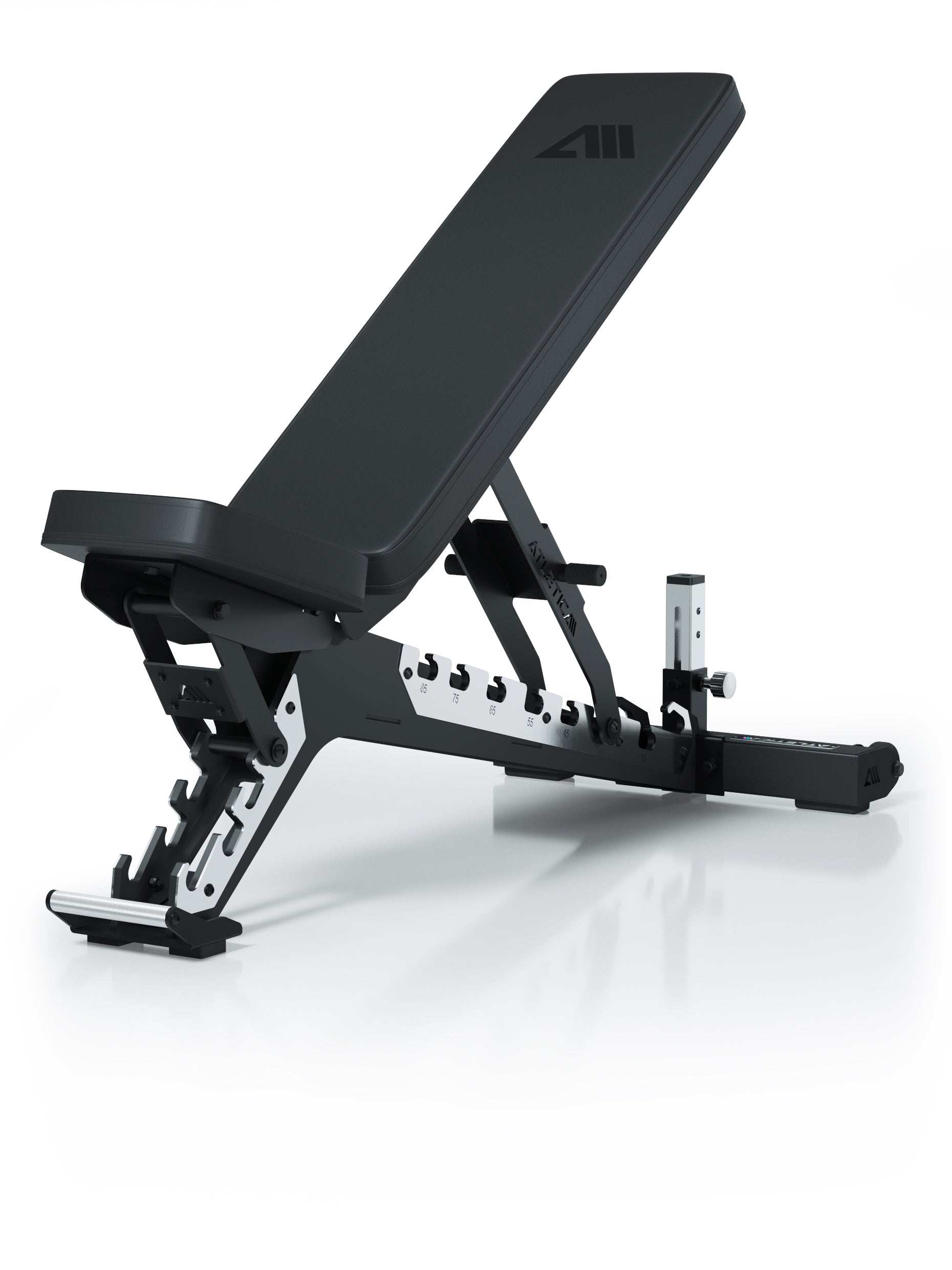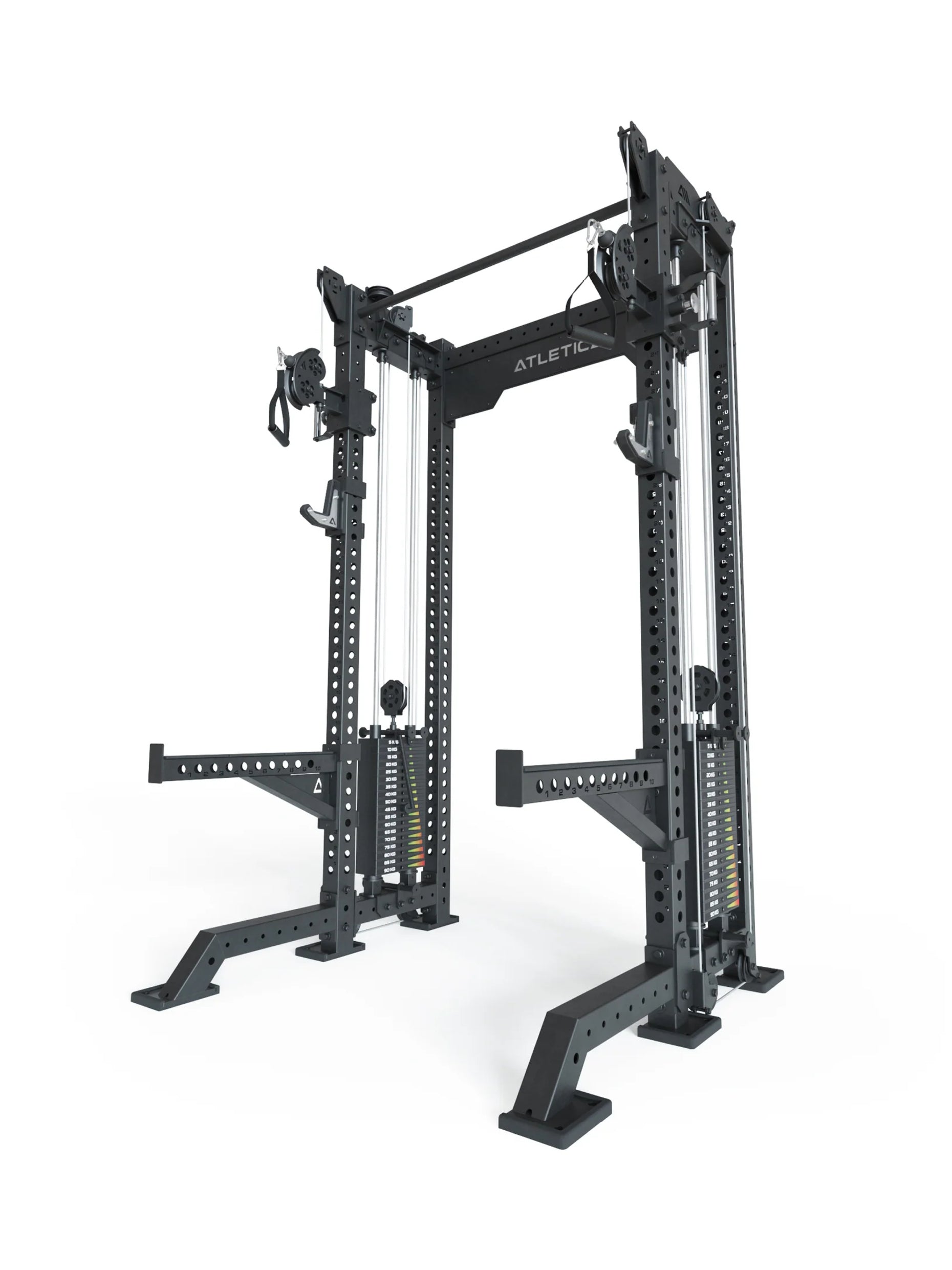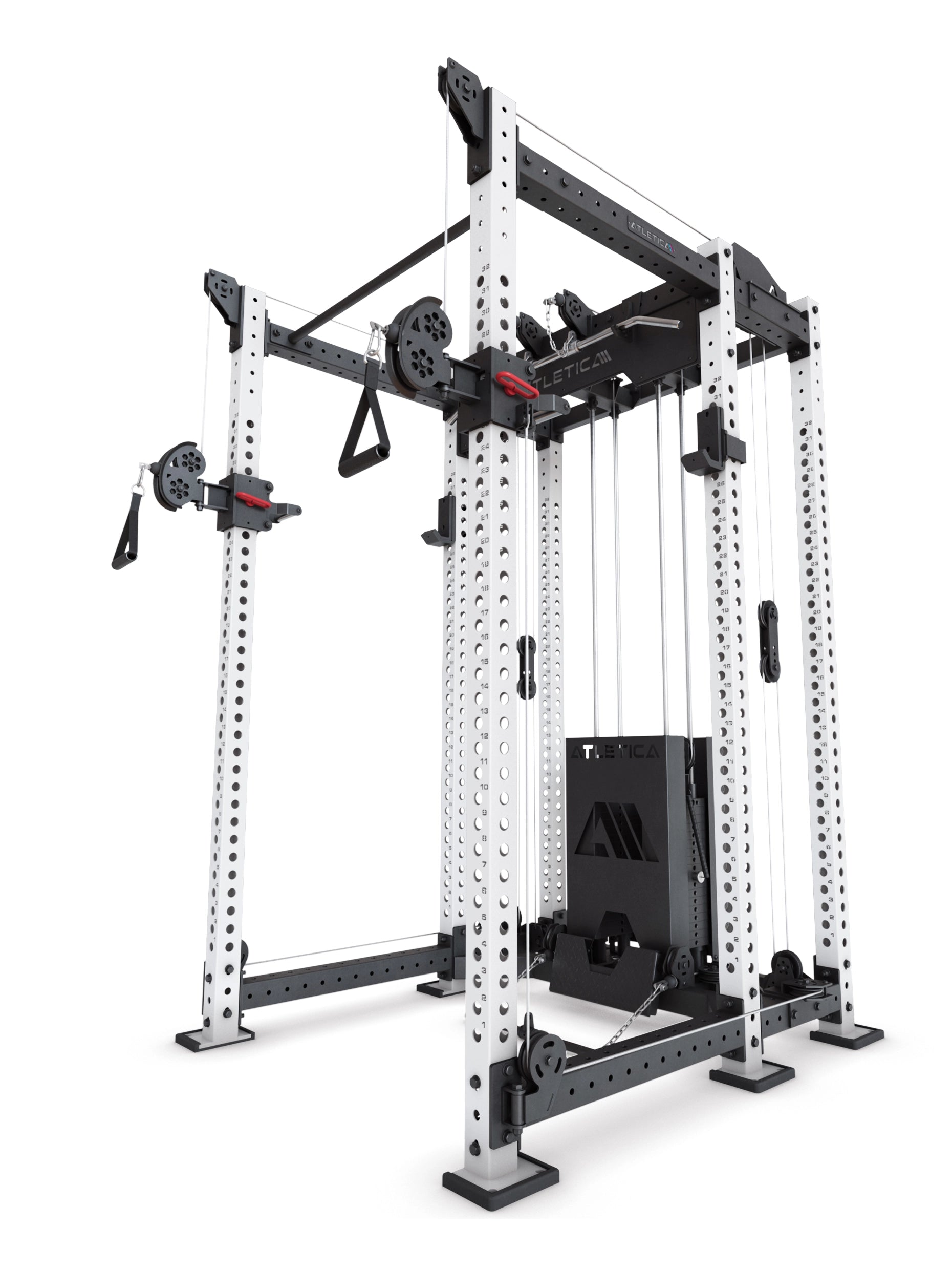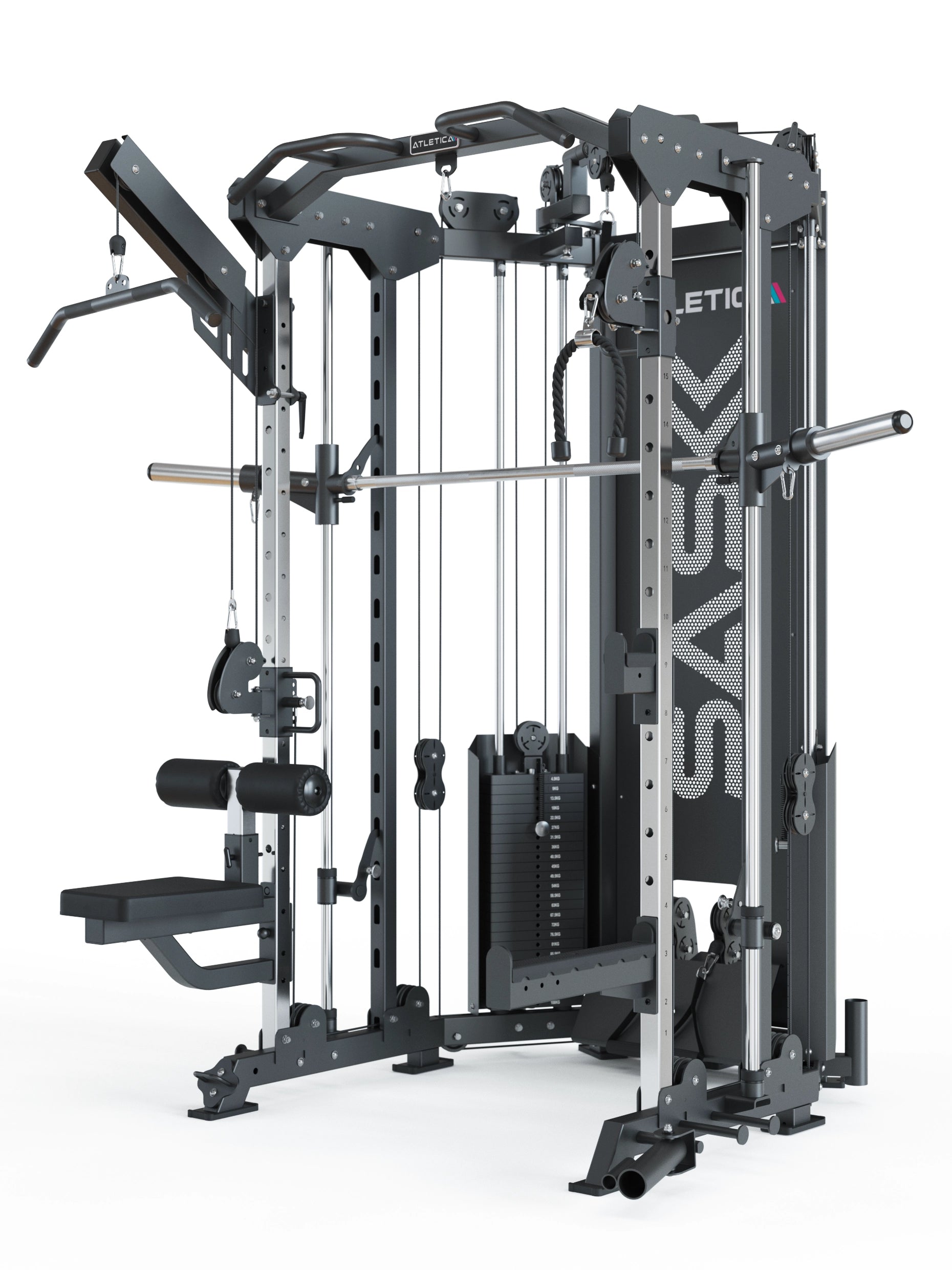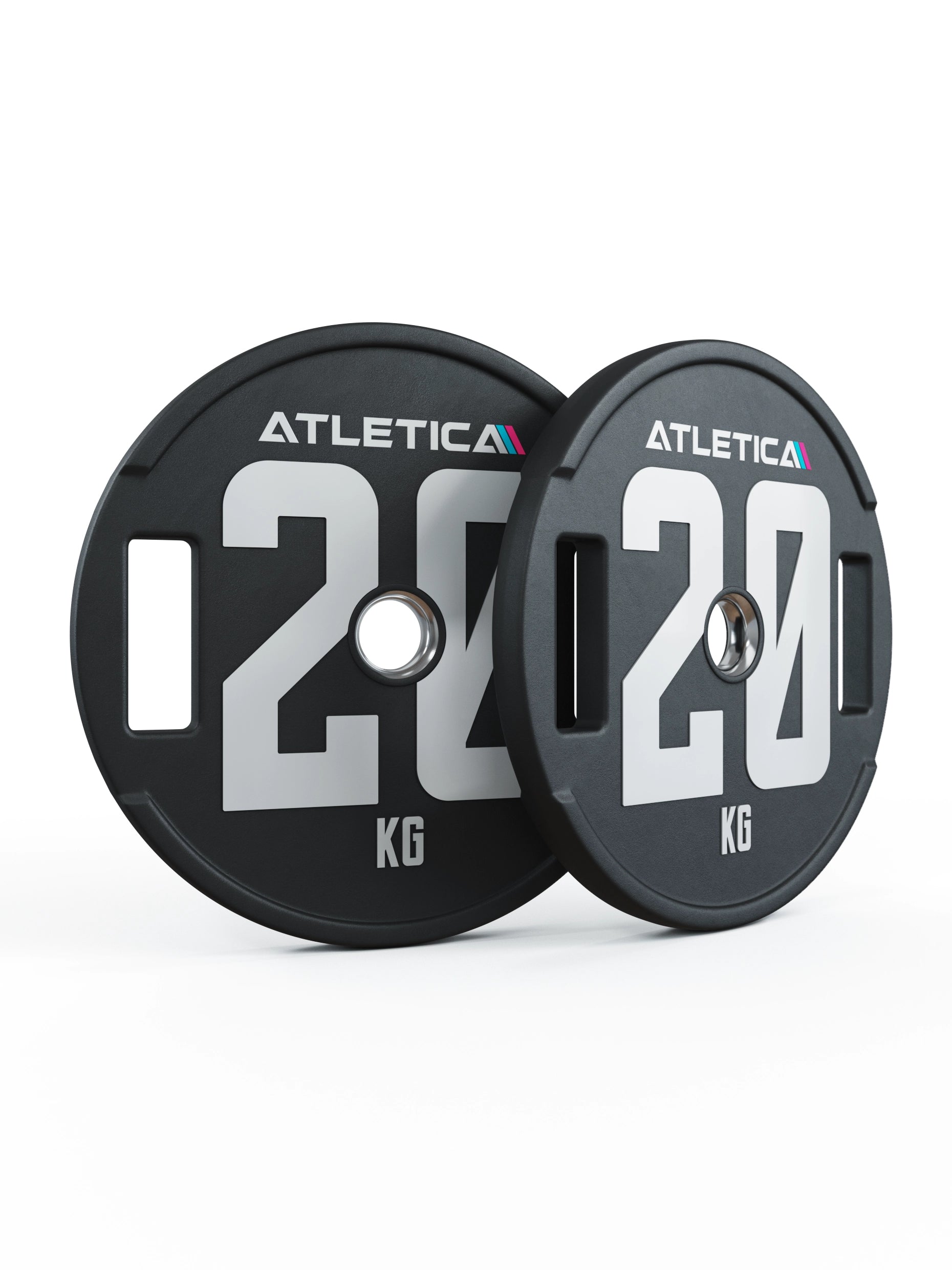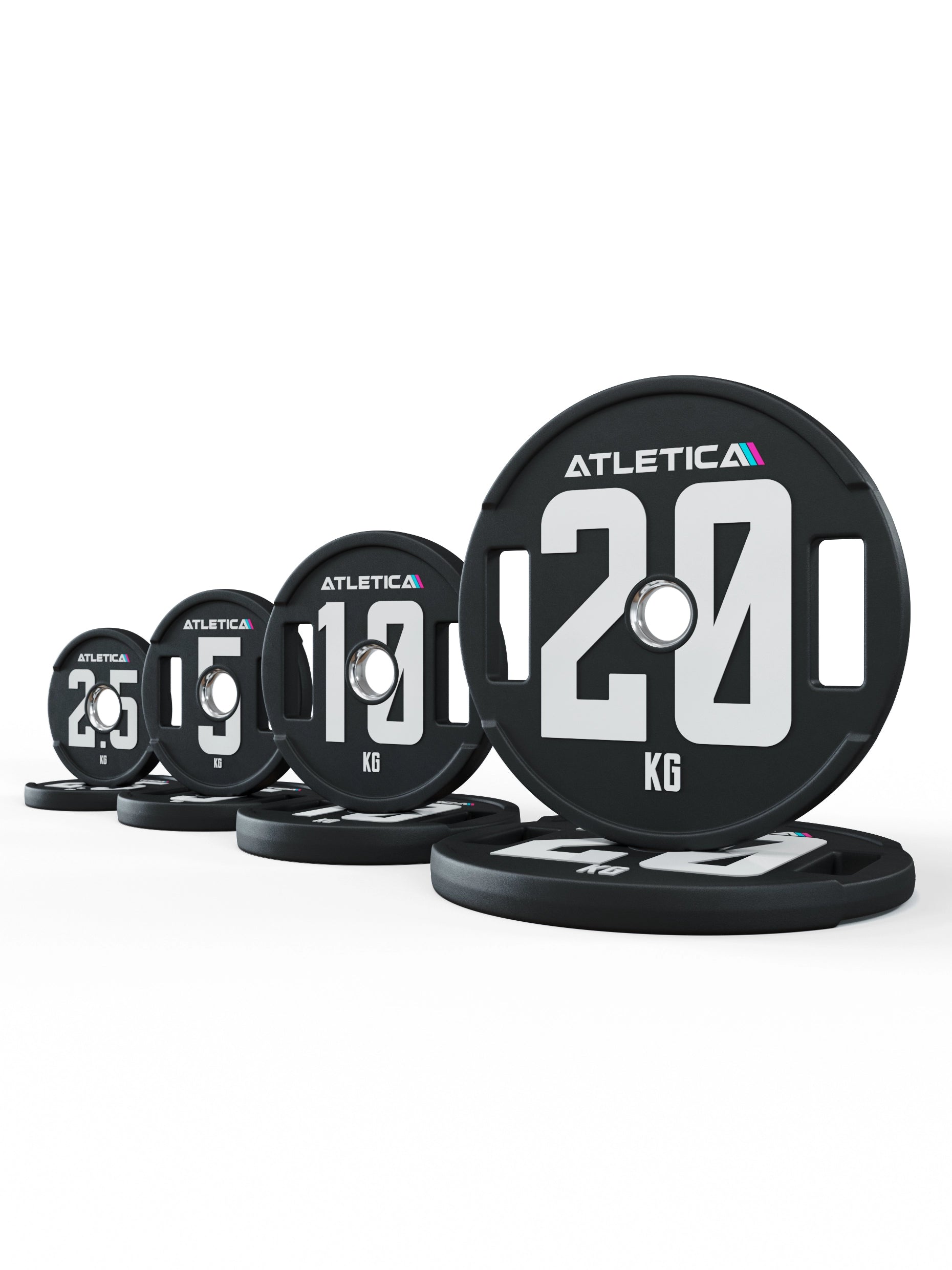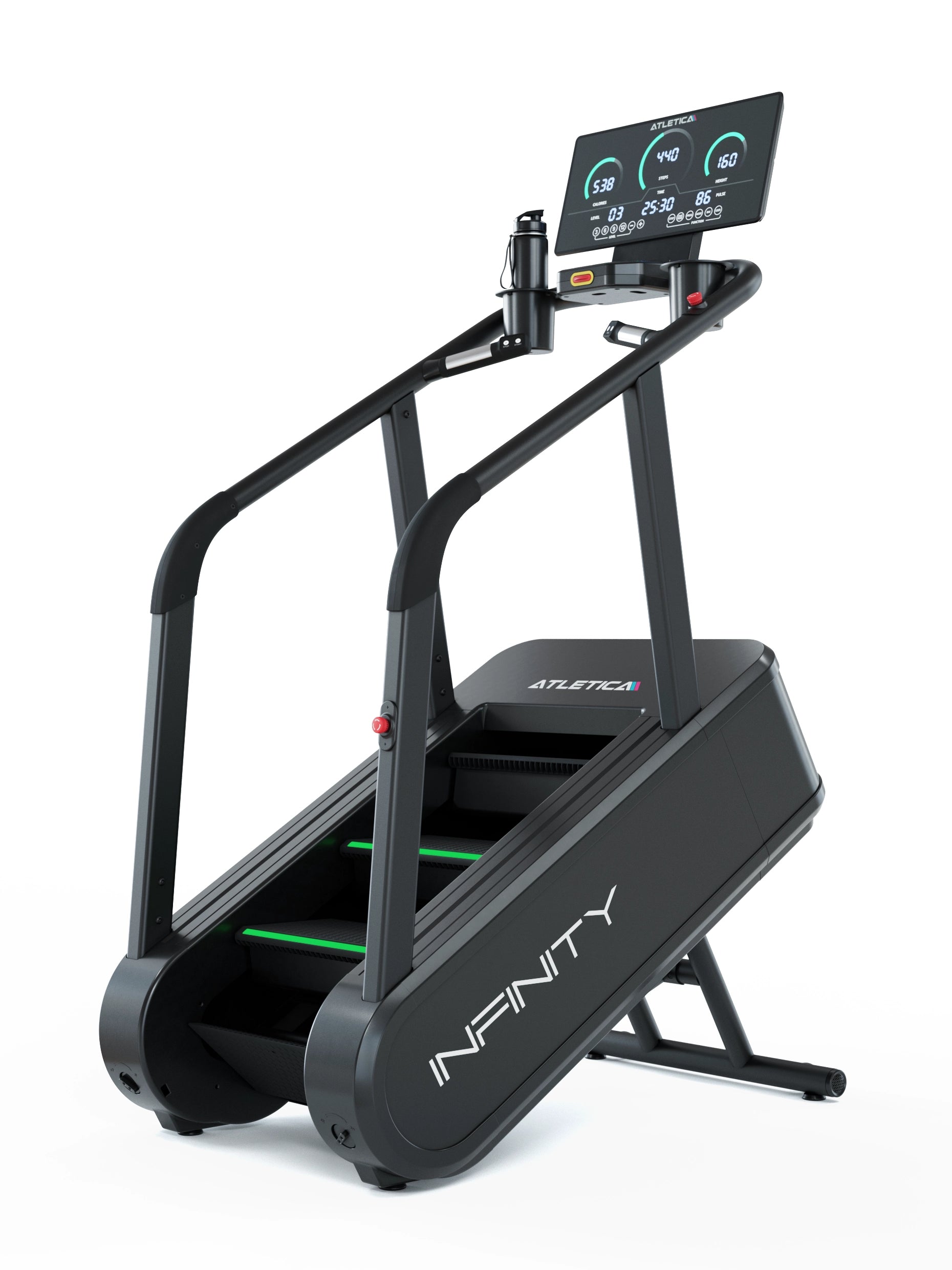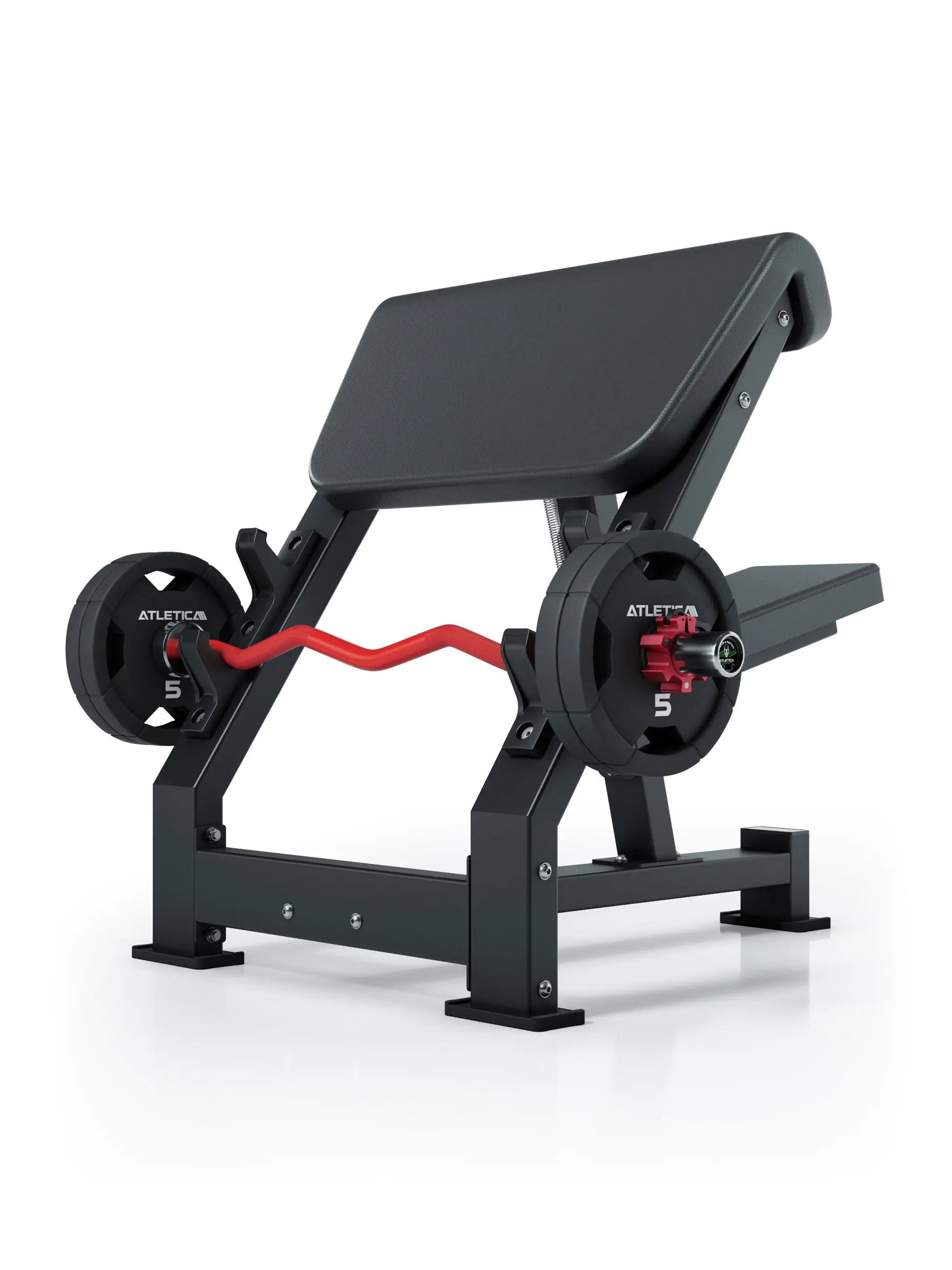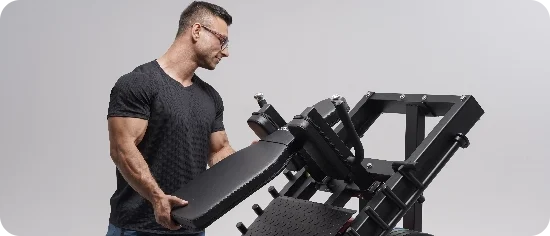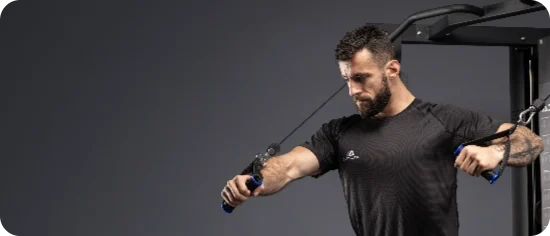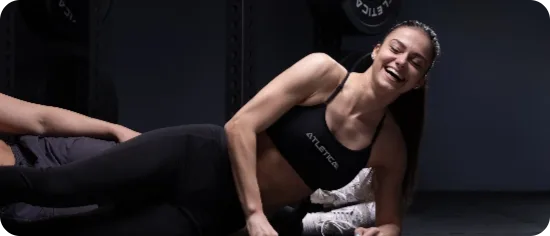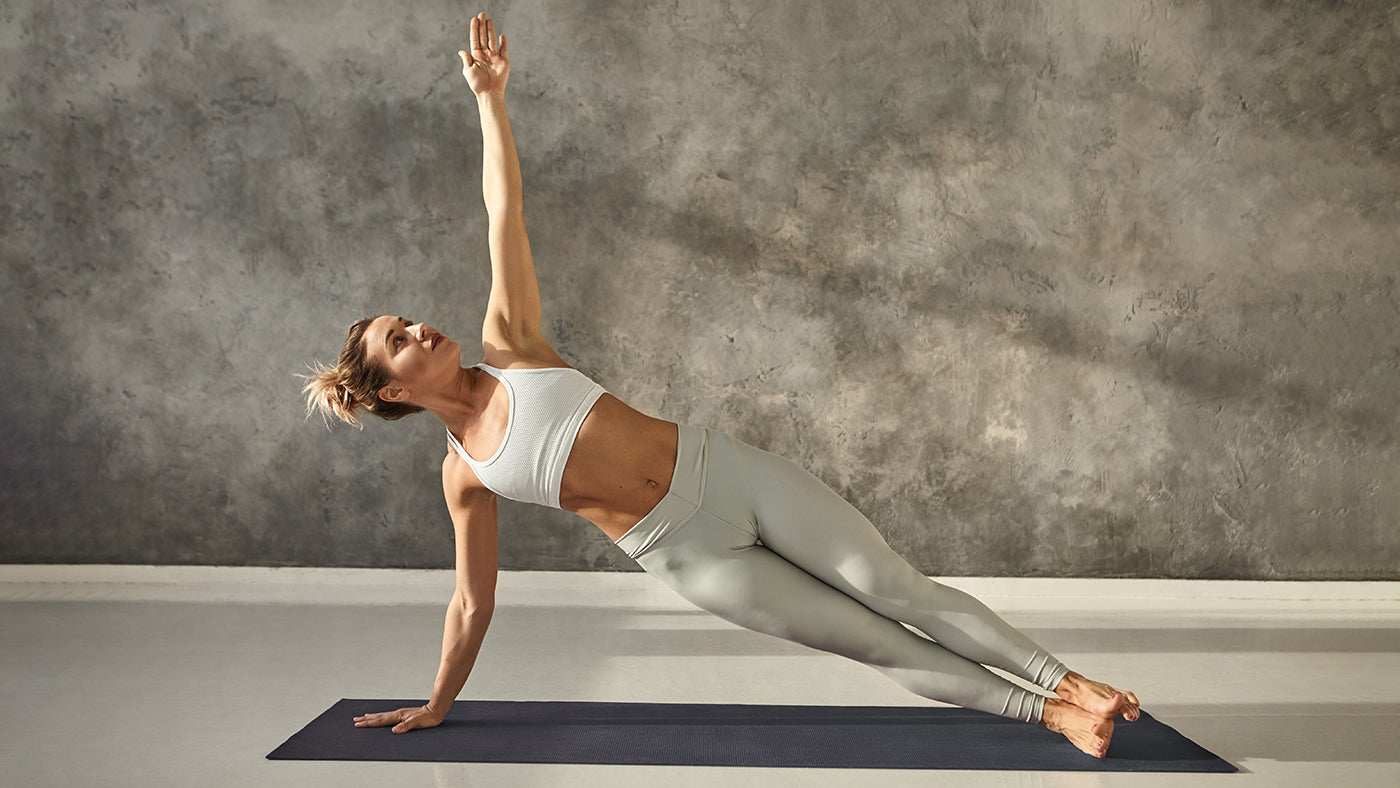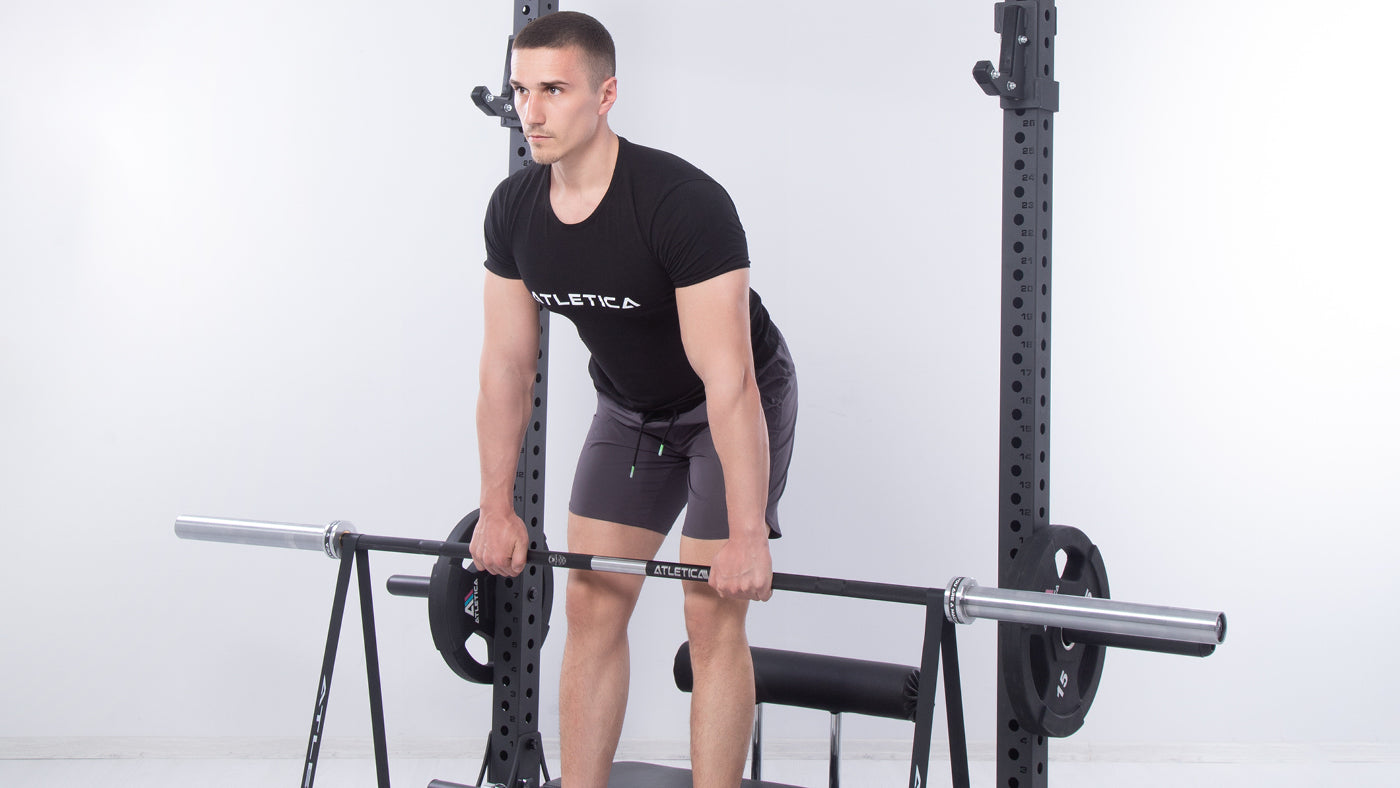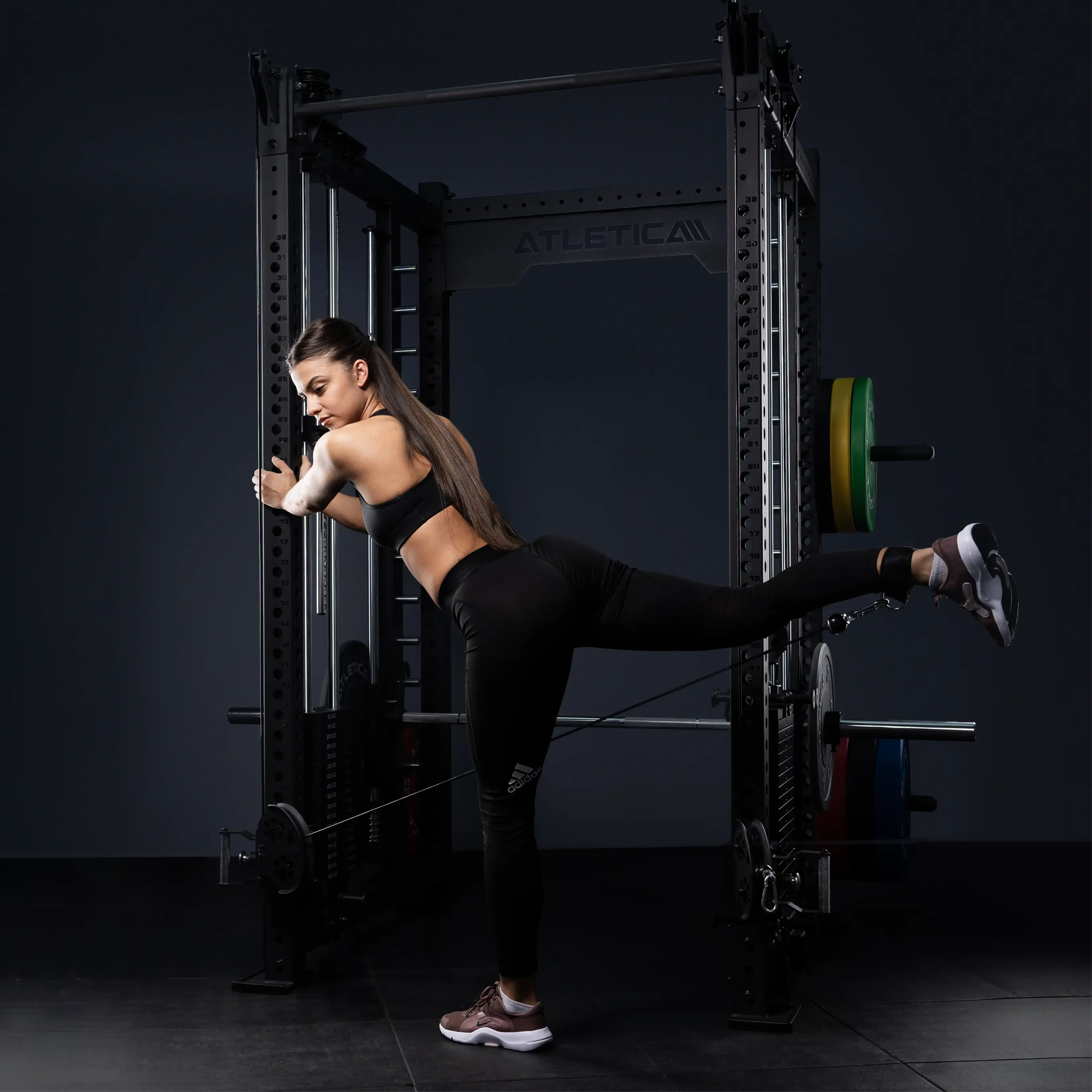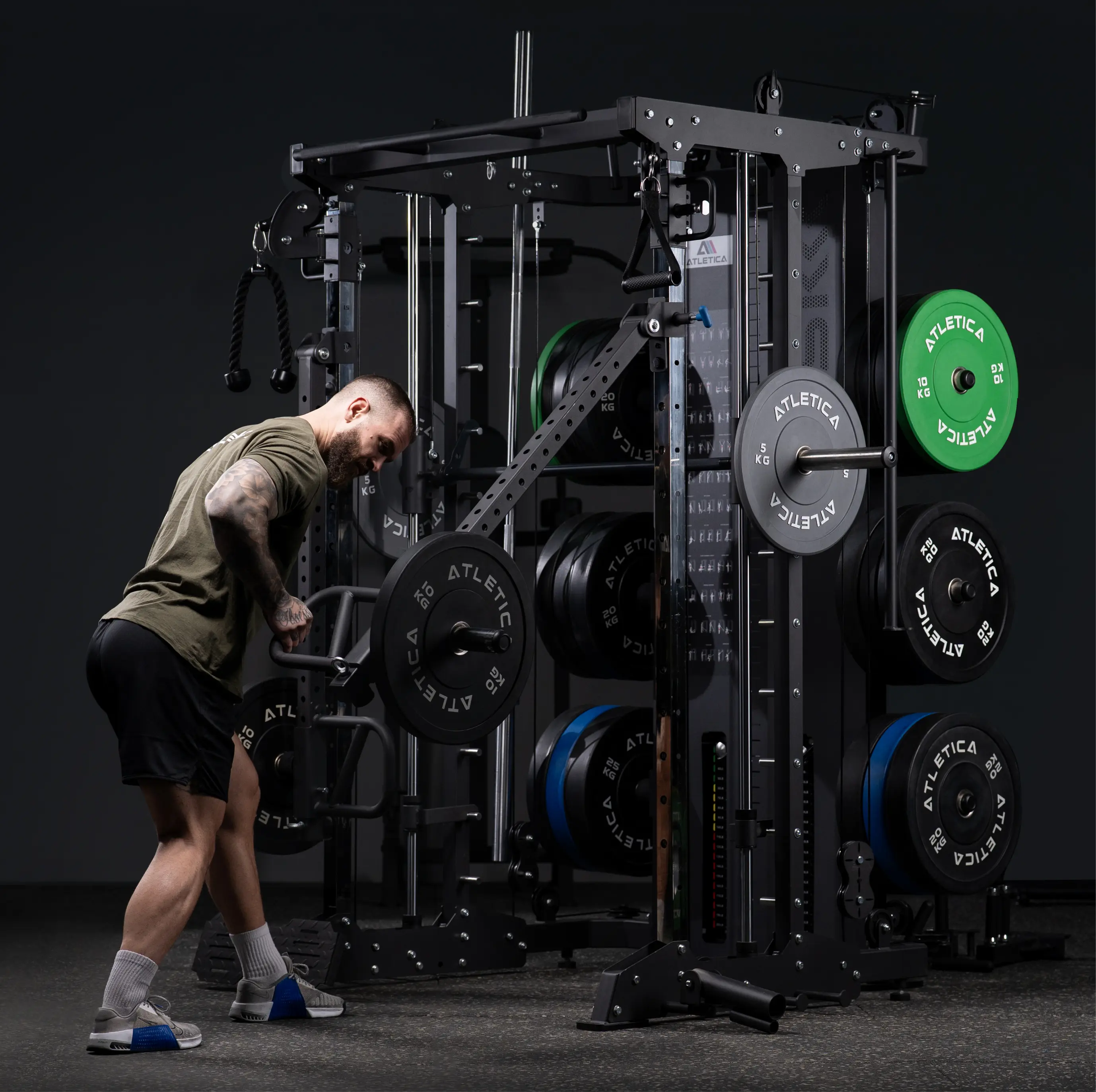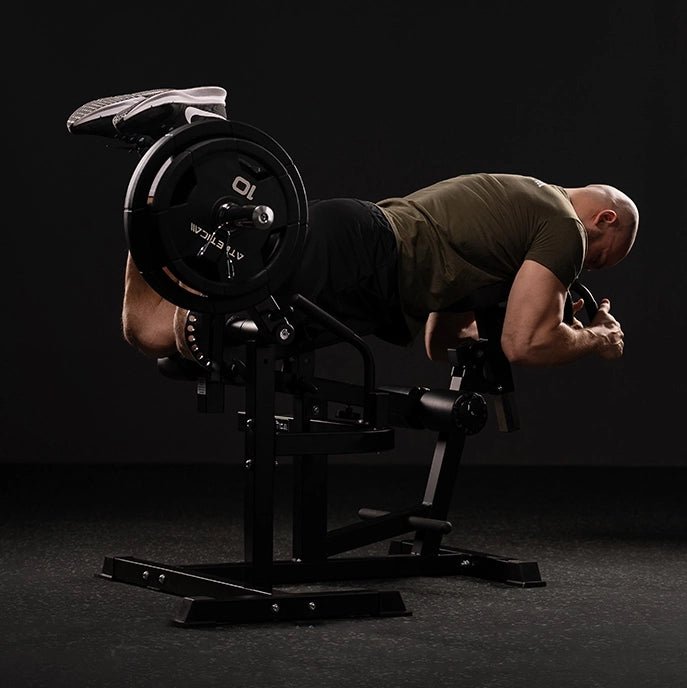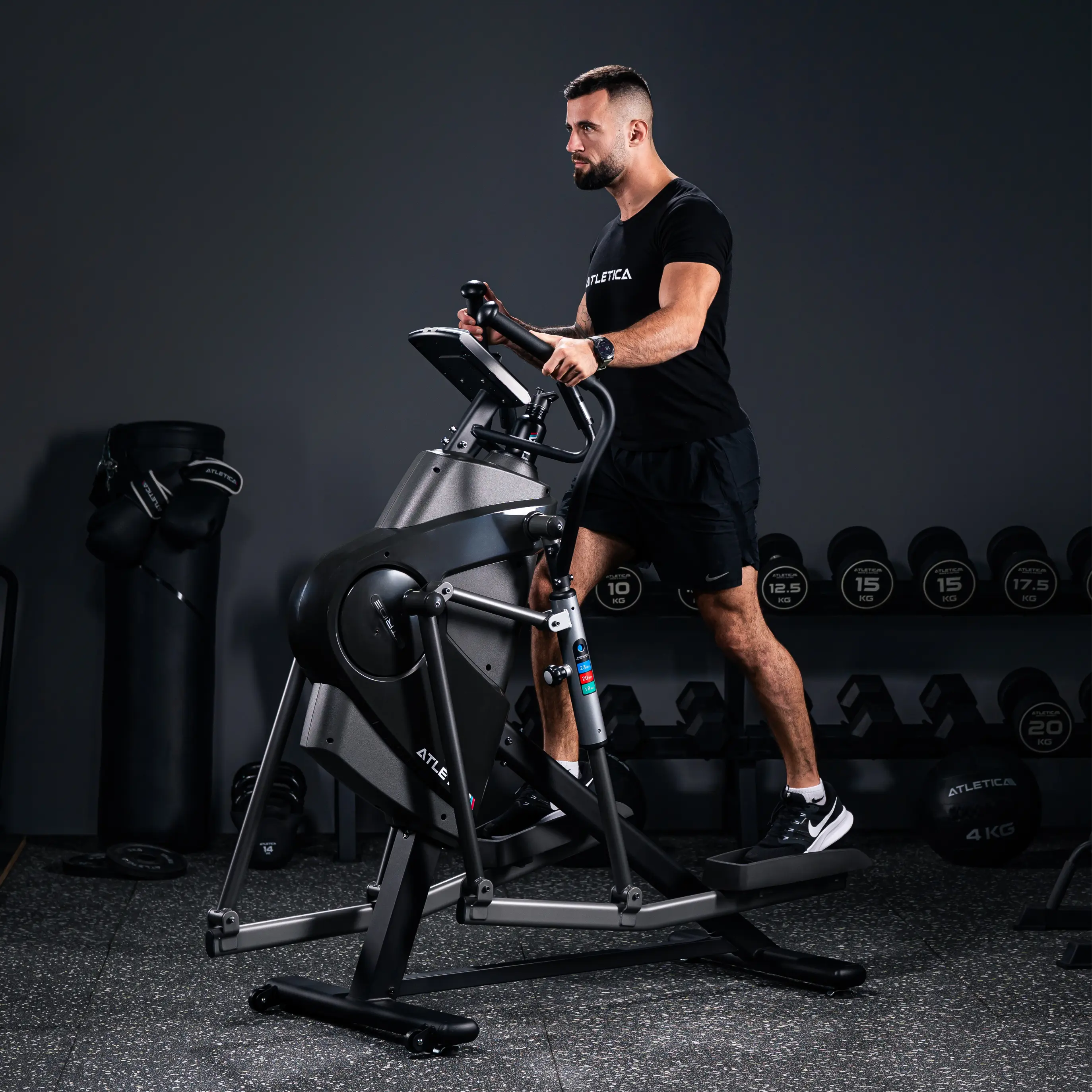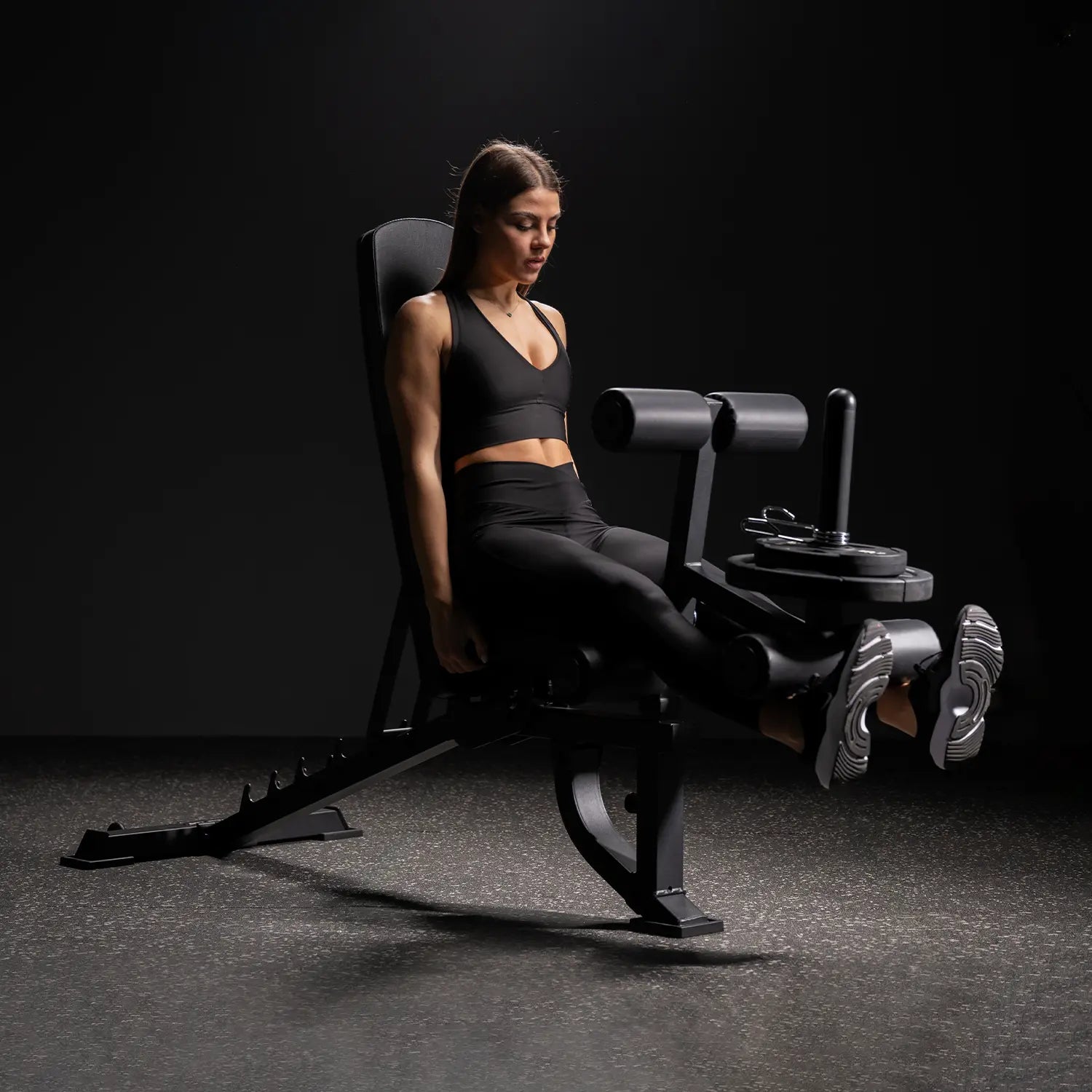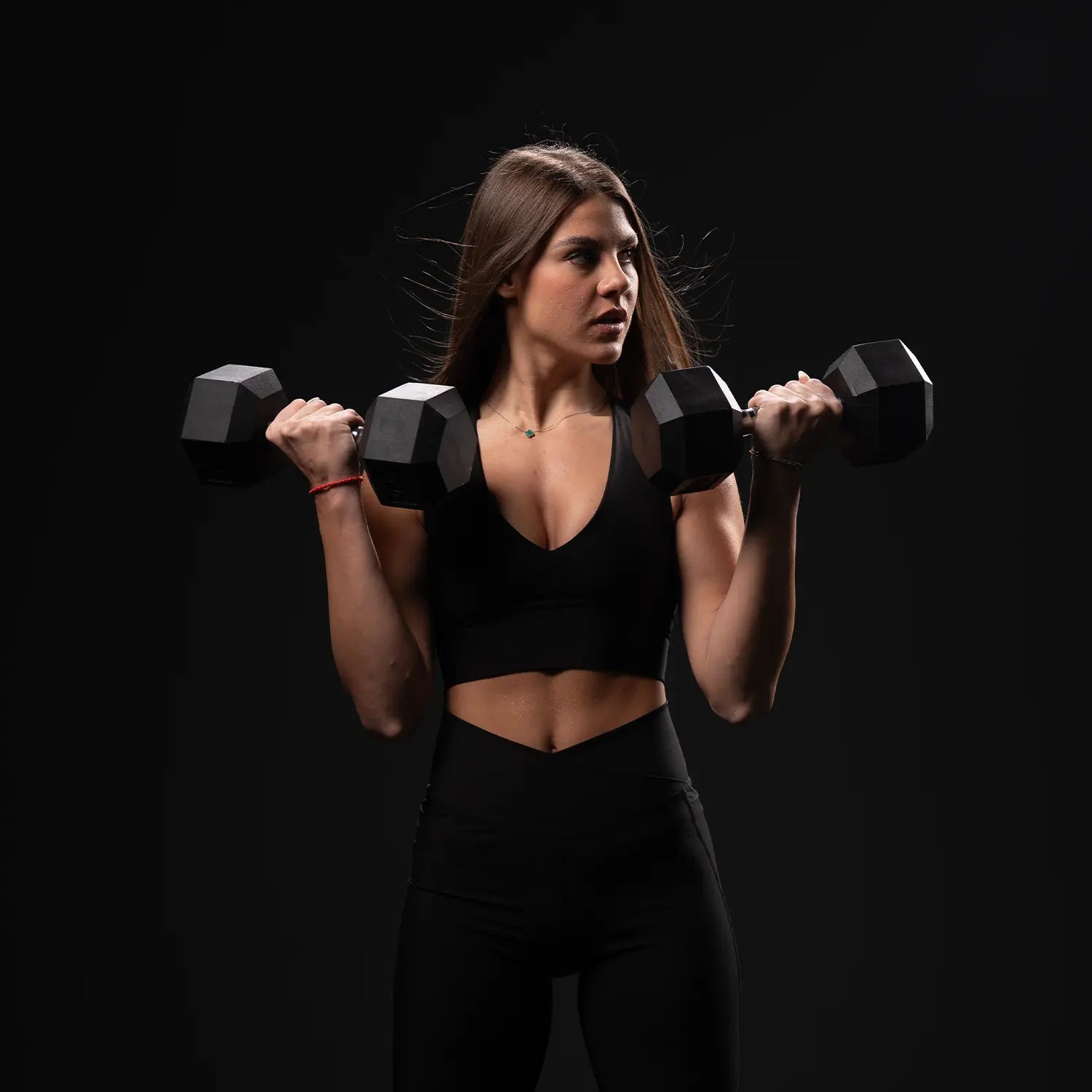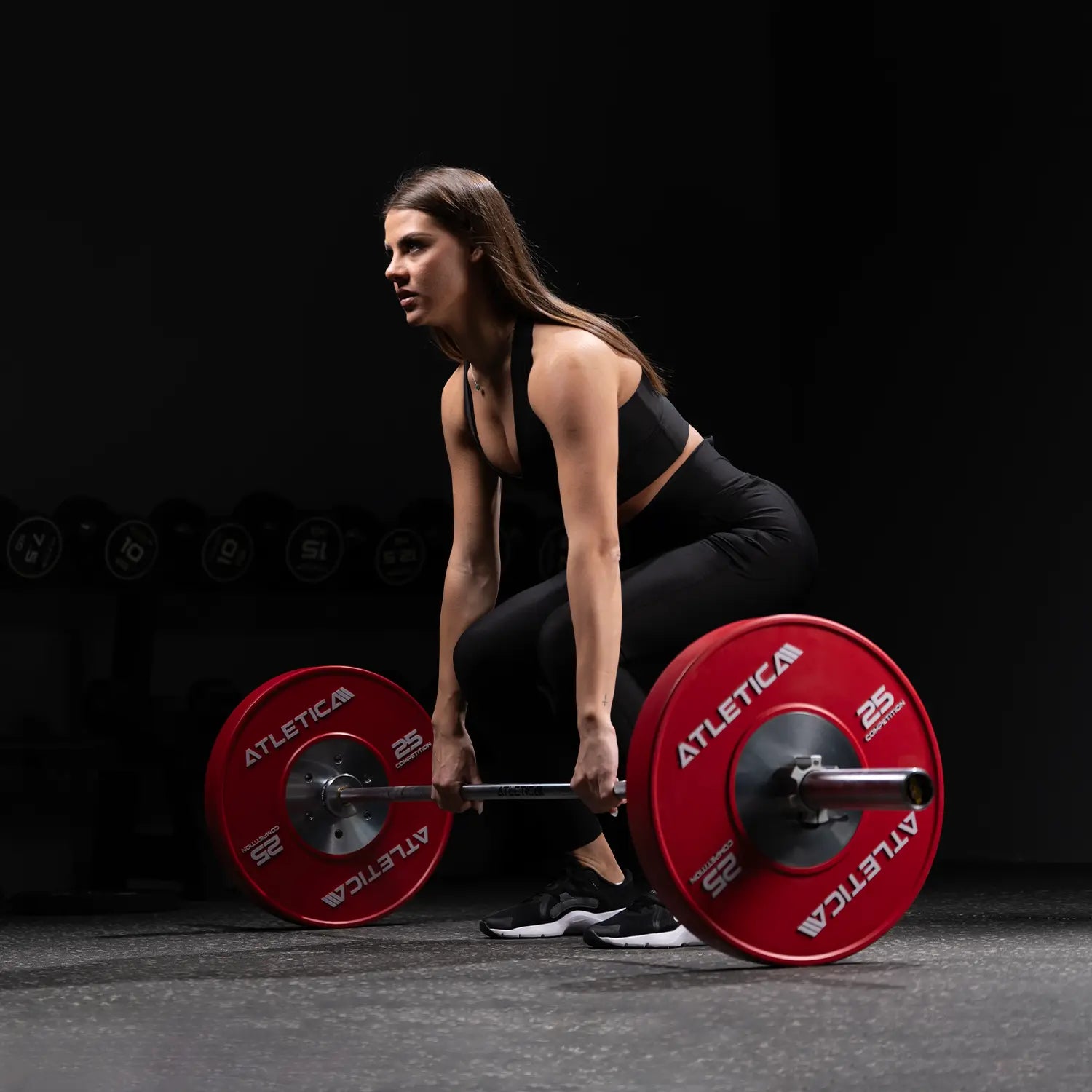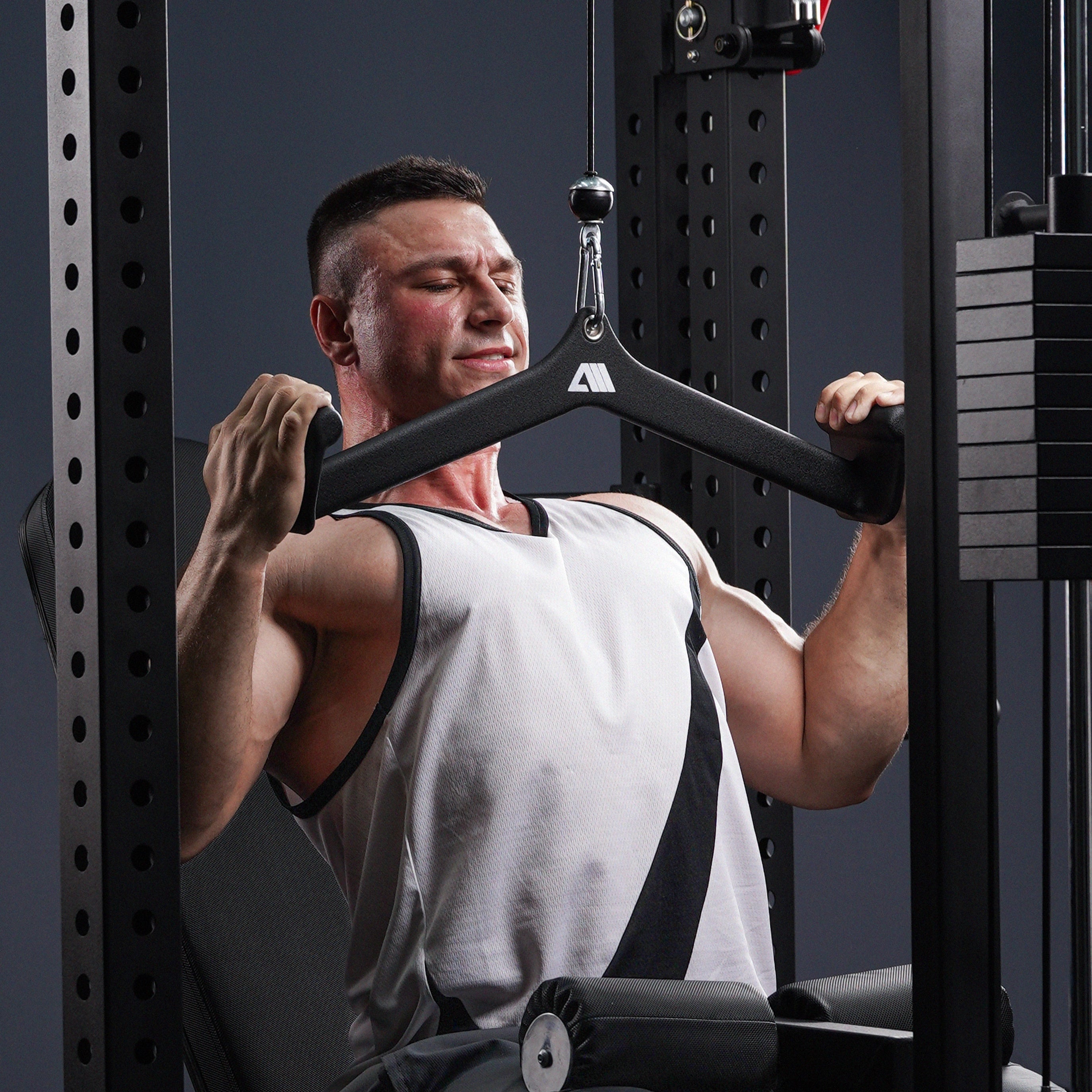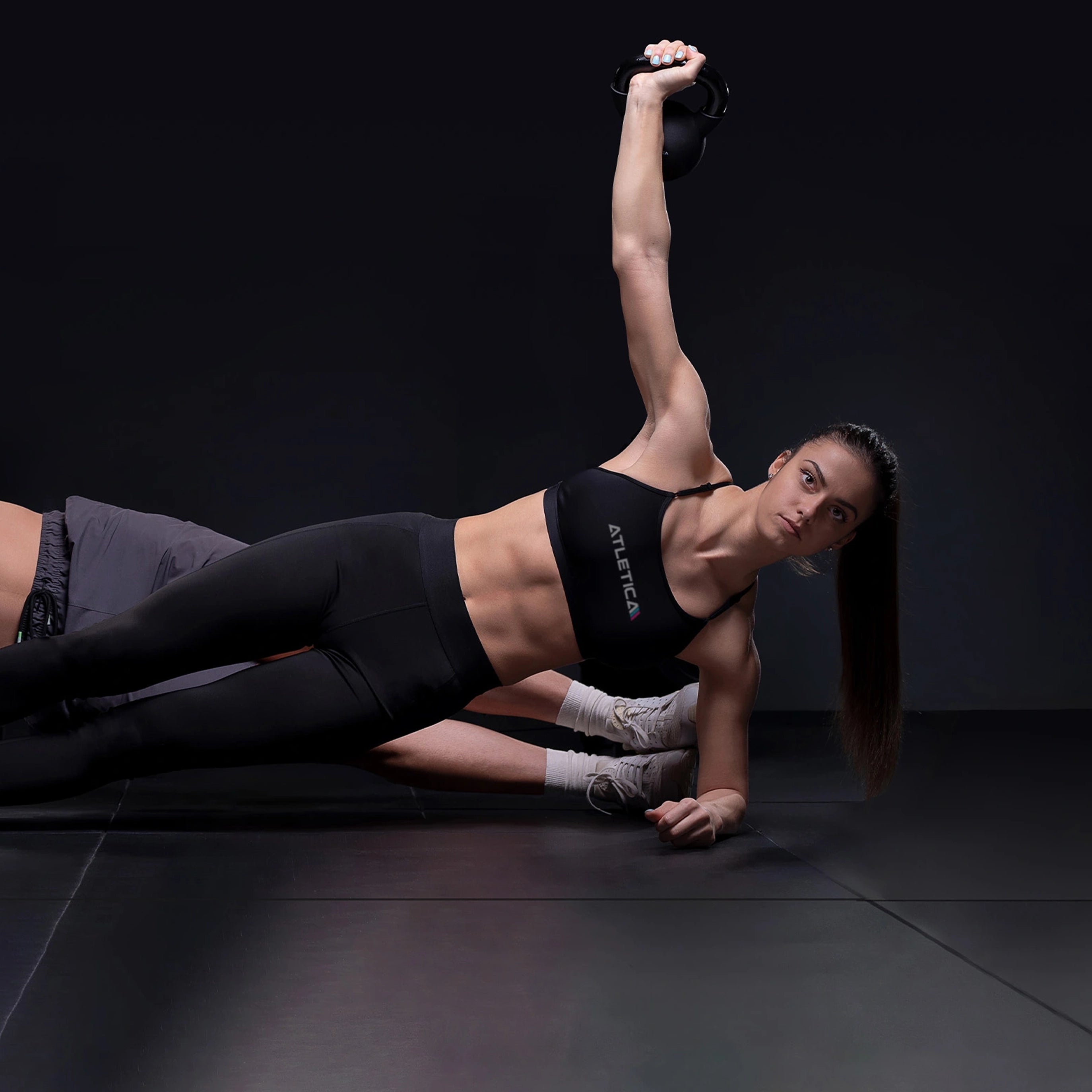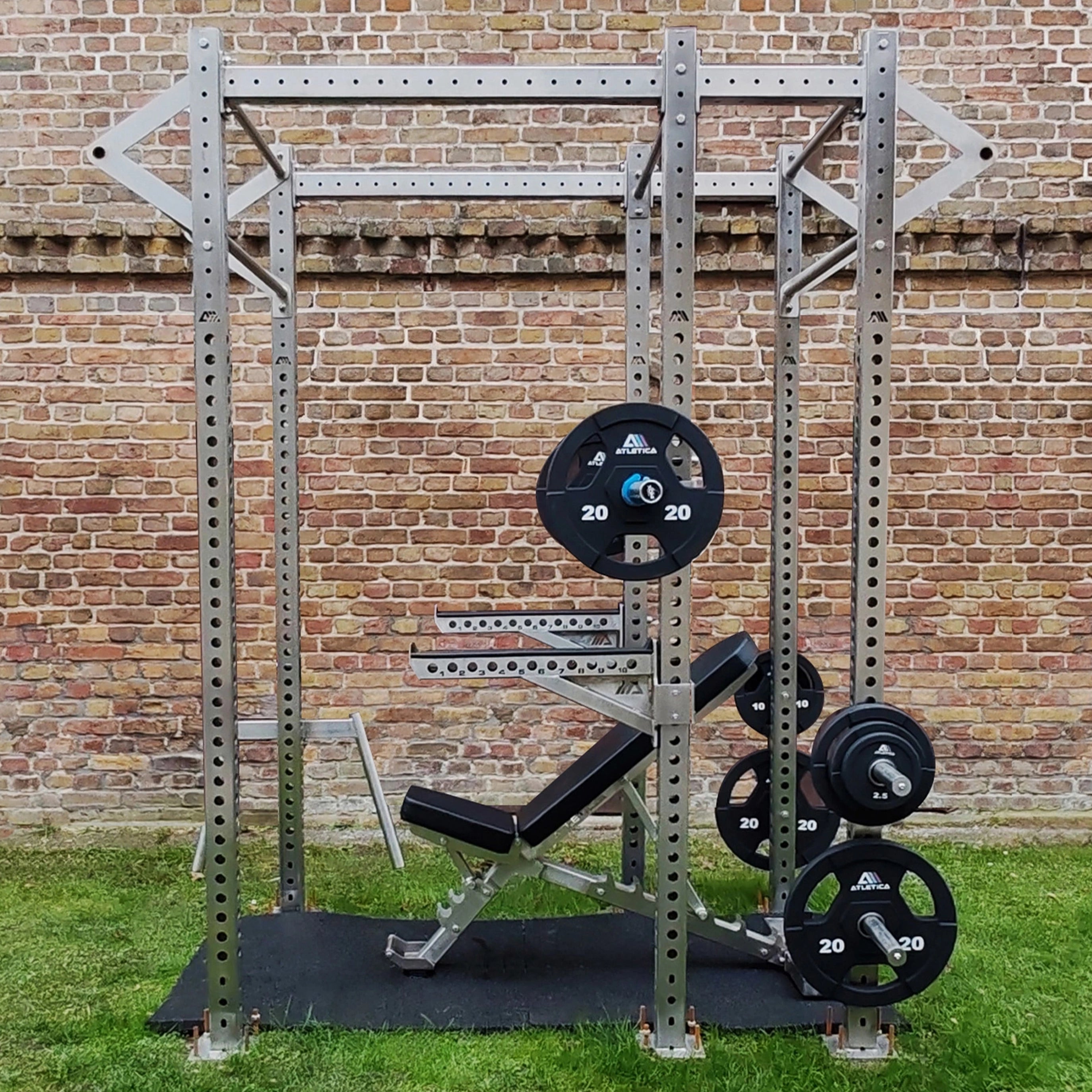Push-ups are among the most effective bodyweight exercises of all. They not only train your chest, triceps, and shoulders, but also your core and torso stability. And the best part: You don't need an expensive gym—your own body weight is perfectly sufficient.
However, getting started is often difficult, especially for beginners. The technique seems simple, but is prone to error. Many underestimate posture, work from the back, or forget to maintain tension in the body .
In this guide, we'll show you step by step how to learn how to do push-ups correctly—with sensible progressions, equipment tips from Atletica , and a training plan that will help you become stronger in the long run.

Which muscles do you train with push-ups?
Push-ups are a functional whole- body workout with a focus on:
- Chest muscles (pectoralis major)
- Triceps
- Anterior deltoid muscle (shoulder)
- Torso and abdominal muscles
- Stabilizers in the back and legs
Depending on the hand position and variation, you can shift the focus—to strength, stability, or muscle building. Ideal for home use, but also as a supplement in the studio or gym.
The most common mistakes when doing push-ups
If you want to learn push-ups, you should first be aware of the typical mistakes:
- Sagging pelvis (lack of core tension)
- Widely spread elbows ( unnatural strain on the shoulder)
- Head hangs down (neck tension pre-programmed)
- Movement too short (no full muscle activation)
Tip : Film yourself or train in front of a mirror. Proper technique is crucial for progress—and for your joints.

How to start with push-ups: 3 progression levels
1. Push-ups on the wall or on the rack
For absolute beginners we recommend elevated push-ups – e.g. For example, against a wall or at chest height on the Power Rack R5 . This reduces body weight and facilitates movement.
2. Knee push-ups on the mat
Reduce the difficulty by lowering your knees. The movement remains the same – focus on core tension and a smooth lowering of the upper body .
3. Classic push-ups on the floor
Body in a straight line, hands approximately shoulder-width apart under chest. Elbows extend back at an angle of approximately 45 ° . Chest briefly touches the floor, then pushes back up.
Tip : Use a yoga mat or non-slip surface for more comfort.
With these tools from Atletica you train even better
Even if you don't need any equipment for push-ups, with the right accessories you can improve technique, strength and variation:
- Power Rack : Ideal for elevated push-ups, dips or combined movements
- Push-up handles : Ergonomically shaped, protect the wrists and increase the range of motion
- Minibands : Activation of the shoulder and core muscles before training
- Dumbbells : For additional strength training – e.g. B. Flies, triceps kickbacks or rows
- Adjustable weight bench B10 : For push-up progressions with raised legs

Especially for ambitious beginners, it is worthwhile to train with high-quality equipment right from the start – also for motivation and long-term training success.
Training plan: Perfect push-ups in 4 weeks
Week 1–2: Technique & Stability
- 3 sets of 10–12 repetitions 3 times a week on the wall or rack
- Add core exercises : planks, hollow hold, shoulder taps
- Use fascia roll for chest & shoulder for regeneration
Week 3: Switch to knee push-ups
- 3 sets of 8–10 repetitions 3 times a week
- Pay attention to clean movement and tension in the abdomen
- Use mini band for activation before training
Week 4: First classic push-ups
- 3 sets of 5–8 repetitions 3 times a week
- After each session stretching & mobilization of the shoulders
- Optional : Training with push-up handles for more depth
With this plan, you can learn push-ups step by step – without overloading, but with steady progress.
Advanced variants for advanced users
If classic push-ups become too easy for you, there are numerous ways to increase the intensity:
- Negative push-ups: Slowly lower (4–5 seconds), explosively high
- Diamond Push-ups : Hands close together – more focus on triceps
- Explosive push-ups : With lifting of the hands or as a clap
- Legs raised on the bench: More load on chest and shoulders
- Weighted push-ups : weight vest or barbell on the back (only with spotter!)
Combination exercises such as push-ups and renegade rows (with dumbbells) also provide variety and build strength.
Why push-ups are a useful addition to your training
In addition to their simplicity and effectiveness, push-ups have other advantages:
- Can be done anywhere, whether at home or in the gym
- Ideal for functional strength that you transfer into everyday movements
- Perfectly combinable with exercises for back, legs or cardio
- Motivating progress as you see results very quickly
Especially when combined with the right equipment – like Atletica offers – you will become stronger, more stable and healthier faster.

Conclusion: With the right technique and a little patience for the perfect push-up
Push-ups are a timeless, highly effective exercise – and with the right progression, anyone can learn them. What's crucial is proper technique, consistent training, and the willingness to stick with it.
Whether with a power rack, push-up handles, or additional tools – Atletica offers you the equipment to complement your bodyweight training. So you get the most out of every session – safely, effectively, and with fun.
Want more? Discover the right tools for your bodyweight training in the Atletica online shop or get more tips in the knowledge blog. . Start your training – and master the perfect push-up.


